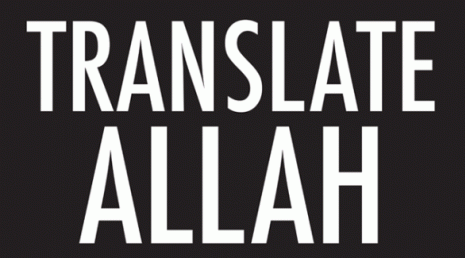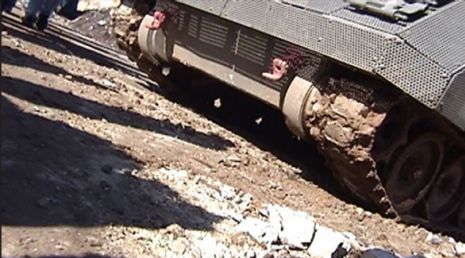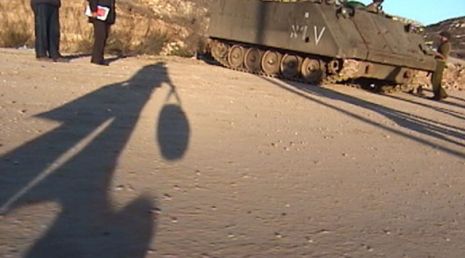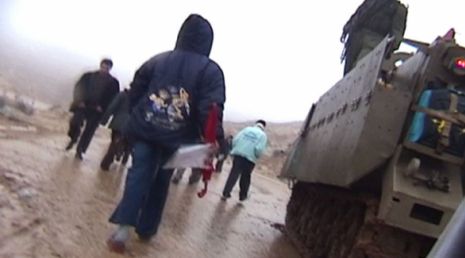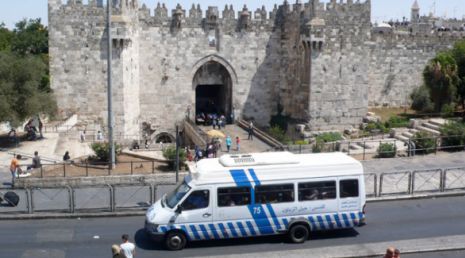Social Space
"...We need a third term, one that can describe the space between the state and the supposedly safe havens of the personal. Let us call this space 'the social.'"
Carolyn Forché, Introduction to Against Forgetting: Twentieth Century Poetry of Witness
Using a diverse range of media and strategies including film, photography, social interventions, installation, performance, writing, conceptual practices and sound, Jacir works in the social space. Trajectories prevalent in her work since the early 1990 include translation and exchange, movement (both forced and voluntary), resistance, political land divisions, and repressed historical narratives.
"There is little room for individuality in war."
Chris Hedges, War is the Force that gives us Meaning
In many of her actions and documents, Jacir negotiates the impact of the power of the state on individuals in their daily lives. No mere observer, she participates in and covertly interrupts the status-quo. After her first attempt to film her everyday commute through the West Bank, which resulted in detainment at gunpoint and having her videotape confiscated, she went home, cut a hole in her bag, and, for a week, surreptitiously filmed Crossing Surda: a record of going to and from work. An artist witness who produces lucid evidence, she - and, so, viewers - do not rest on hearsay.
"...Her compositions slip through the nets of bureaucracies and nonnegotiable borders, time and space..."
Edward W. Said, Where We Come From, Grand Street Magazine
"This above all, we have never denied our dreams. They would have had us perish. But we do not deny our voices. We are disorderly. We have often disturbed the peace. Indeed, we study chaos it points to the future."
Susan Griffin, Woman and Nature: The Roaring Inside Her
Jacir's work can be seen in the lineage of art as resistance made during periods of extremity. To make apparent what has been silenced or disappeared is a powerful antidote.
As in the prose poem Instead of a Preface, the Russian poet Anna Akhmatova describes waiting in line for seventeen months outside of a prison. "Can you describe this?" a woman asks her. "And I said: 'I can.' "
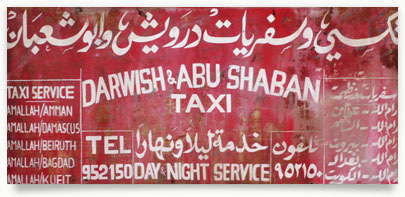
Servees (communal taxi) sign
Jacir's 2008 Untitled (servees), a site specific audio work installed at Damascus Gate, in Jerusalem's Old City, is part of her ongoing long-term research, which explores and investigates the disappearing transportation network in Palestine and its implications on the physical and social experience of space.
In an interview with cultural critic Adila Laidi-Hanieh, Jacir describes the work. "...one of the features in the landscape of Palestine for me since my childhood has always been the sound of the servees' drivers calling the names of their various destinations. As a kid I was always imitating their calls over and over again. The work itself is an audio work located at Bab il Amoud (Damascus Gate), which stands at the start of the road leading to Nablus and onwards to Damascus. Once a massive hub of the main regional transport network of servees (communal taxis), it had direct links to Beirut, Amman, Baghdad, Kuwait as well as every urban Palestinian center such as Lyd, Jaffa, Ramallah, Nablus, Gaza, and Ramle.

Damascus Gate was the point where servees drivers used to pick up customers by calling out the names of their various destinations. Untitled (servees) recalls that purpose and the once fluid space of movement, connection and exchange and attempts to make visible through sound the fractures and interactions of everyday life within the disintegrating urban landscape. Calling out cities servees drivers recall their destinations.
I spent around a month going around and working with the servees drivers to record them calling out cities. I ask them to call out their destinations some of which they can still reach like Bethlehem and Ramallah...[and] had them recall those cities that were once attainable but no longer are such as Beirut, Kuwait, Baghdad, Gaza...as the years go by we lose more destinations.
The calls of the servees drivers are a sound which is disappearing from our contemporary landscape. The final piece is a 20-minute audio track of their calls which when installed on site blend into the sounds of the city. If you happen to walk by when it is the call for Beirut or Baghdad or Gaza you would really notice something uncanny, given the impossibility of such destinations from Jerusalem today..."


